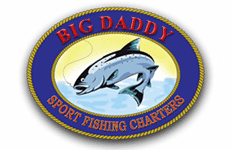Coho Salmon
The average adult Great Lakes coho salmon weighs eight pounds. Like the chinook, coho are native to the Pacific coast of North America, and to parts of Asia. They were introduced into the Great Lakes in 1873 but the first successful plantings weren’t until 1966. There was much excitement amount anglers and fish managers when coho made their first spawning run in the fall of 1967. Since that time, the coho has become a popular sport fish, in fact people come from all over the world to fish Lake Michigan’s great coho fishery.
Although coho do spawn in Great Lakes tributaries, present fish stocks are maintained mainly by fish culture and stocking. There simply aren’t enough streams available to produce all the fish the Great Lakes can handle. Coho spawing runs up tributary rivers occur from early September to early October. Females excavate a nest in a tributary stream’s gravel bed. Both adult die soon after spawning. The next spring the eggs hatch and the young remain in the gravel for 2-3 weeks. When they emerge (March to July), some migrate downriver almost immediatly. Most, however, wait a year or longer before descending to the lake. Once in the lake, they stay near shore for a few months, then seek deeper waters.
Young coho eat greedily and grow rapidly. Most coho spend about 18 months in the lake, then return to their parent streams to spawn (at age three or four). As soon as they are large enough, young coho begin to eat smaller fish, mostly of other fish species. In the Great Lakes, larger coho feed on smelt and alewives. They compete primarily with steelhead for food. Coho are preyed upon by predatory fish and birds while they are small, and residual numbers of sea lampreys also take their toll of coho populations.
Coho Salmon
Oncorhynchus kisutch
Identifying characteristics: (Non-Native Fish) Two dorsal fins including one adipose fin, inside of mouth black and gums between teeth gray, small spots on upper tail, 13-15 rays in anal fin.
